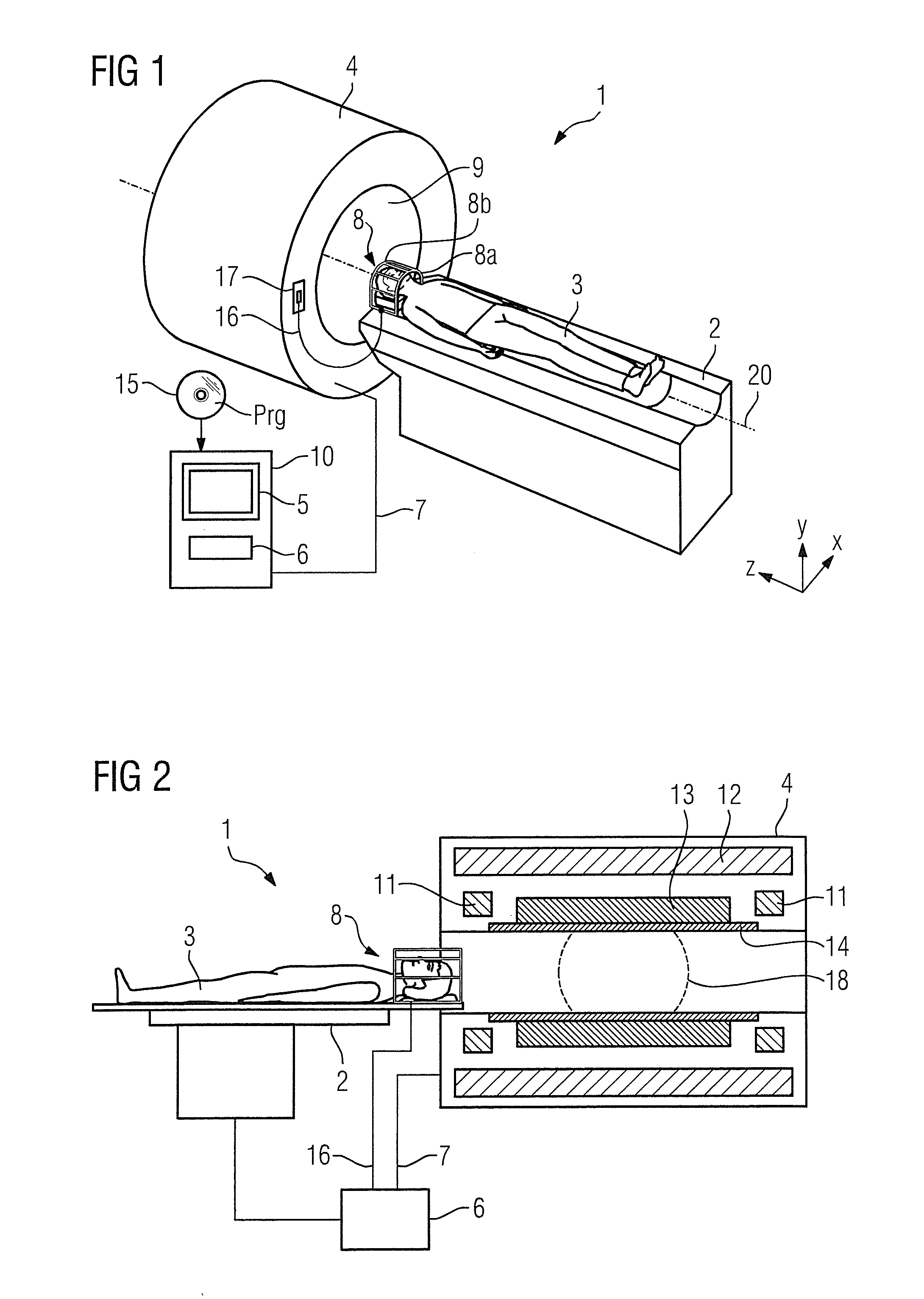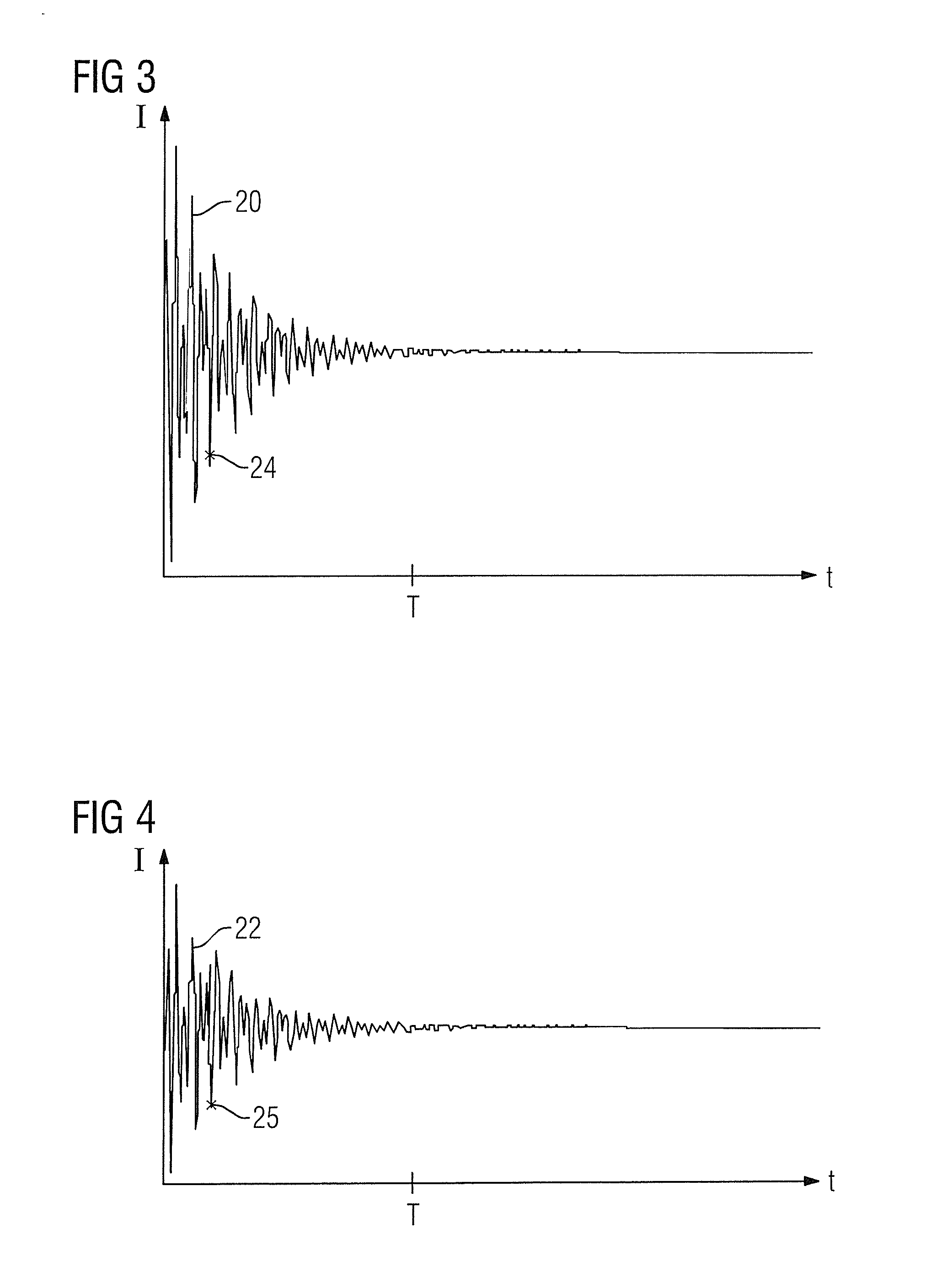Method and apparatus to determine complex sensitivity factors of RF reception coils for magnetic resonance spectroscopy
- Summary
- Abstract
- Description
- Claims
- Application Information
AI Technical Summary
Benefits of technology
Problems solved by technology
Method used
Image
Examples
Embodiment Construction
[0039]With reference to FIG. 1 an inventively embodied magnetic resonance unit 1 in the illustrated embodiment has a basic field magnet 4 with an interior space 9. A patient 3 lies on a patient bed 2, which can be moved along the device axis 20 into the interior space 9.
[0040]In the illustrated example, the head of the patient 3 is in a head coil 8, in this instance composed of two separate RF reception coils 8a and 8b, each having its own receive channel. This is only one of many conceivable exemplary embodiments. More than two RF reception coils can also be provided. The arrangement of RF reception coils can also form a body coil, for example a phased array coil. Head coils composed of four RF reception coils each arranged concentrically about an axis are also conceivable.
[0041]The head coil 8 is connected by the cable loom 16 to the connector 17 and, like all the other components of the magnetic resonance unit, is controlled by the control computer 6. This is typically integrated...
PUM
 Login to View More
Login to View More Abstract
Description
Claims
Application Information
 Login to View More
Login to View More - R&D
- Intellectual Property
- Life Sciences
- Materials
- Tech Scout
- Unparalleled Data Quality
- Higher Quality Content
- 60% Fewer Hallucinations
Browse by: Latest US Patents, China's latest patents, Technical Efficacy Thesaurus, Application Domain, Technology Topic, Popular Technical Reports.
© 2025 PatSnap. All rights reserved.Legal|Privacy policy|Modern Slavery Act Transparency Statement|Sitemap|About US| Contact US: help@patsnap.com



